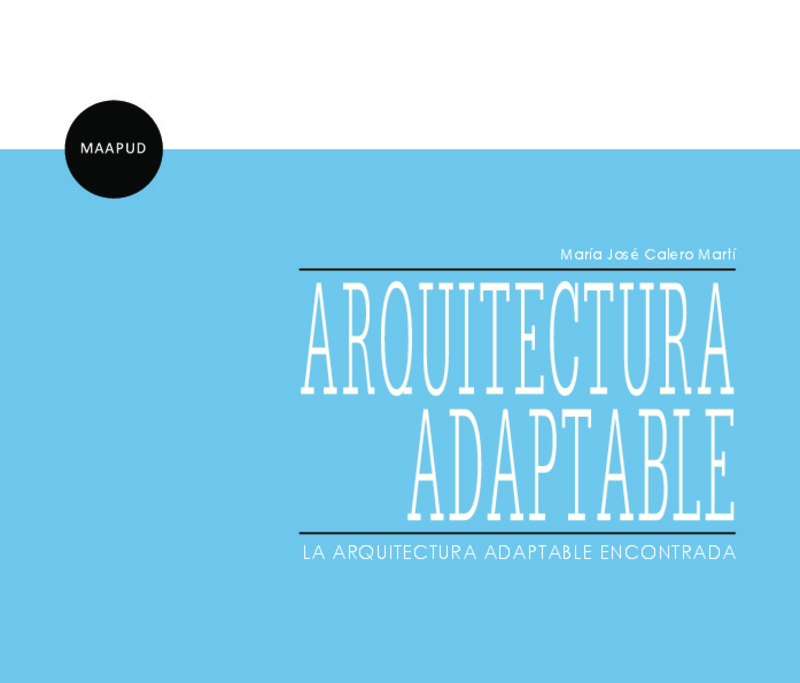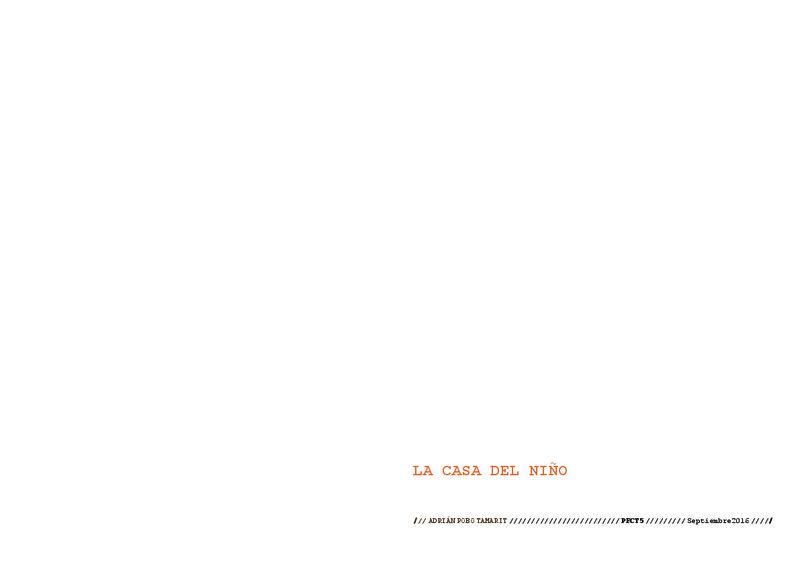JavaScript is disabled for your browser. Some features of this site may not work without it.
Buscar en RiuNet
Listar
Mi cuenta
Estadísticas
Ayuda RiuNet
Admin. UPV
Arquitectura adaptable : la arquitectura adaptable encontrada
Mostrar el registro sencillo del ítem
Ficheros en el ítem
| dc.contributor.advisor | Giménez Ribera, Manuel
|
es_ES |
| dc.contributor.author | Calero Martí, María José
|
es_ES |
| dc.date.accessioned | 2016-03-11T18:03:58Z | |
| dc.date.available | 2016-03-11T18:03:58Z | |
| dc.date.created | 2015-09 | |
| dc.date.issued | 2016-03-11 | |
| dc.identifier.uri | http://hdl.handle.net/10251/61756 | |
| dc.description.abstract | El presente trabajo se plantea como una oportunidad de reflexión en torno a una mesa redonda, con la intención de aportar diferentes puntos de vista sobre una temática común. El tema escogido es la arquitectura adaptable, por considerarse oportuna en respuesta al contexto actual cambiante, en el que la arquitectura parece encontrarse carente de planteamientos capaces de enfrentarse a los nuevos factores económicos, sociales, políticos, tecnológicos... Tras una revisión cronológica de los principales autores, teorías y obras que han abordado el tema con antelación y de la extracción de unos conceptos que compilarán las diferentes componentes de la adaptabilidad, se propone como tema a desarrollar: la arquitectura adaptable encontrada, una arquitectura existente que pese a no ser concebida pensando en su adaptabilidad posee esa capacidad. El estudio se centra en arquitecturas aparentemente carentes de valor, que debido a la obsolescencia de su función original han caído en desuso. Estas “arquitecturas” pese a no ser poseedoras de “patrimonialidad”, tienen otros valores, culturales, económicos, sociales, de utilidad… que justifican el hecho de prolongar su ciclo de vida, frente a la alternativa del derribo, mediante un proceso de Re-uso Creativo. A través de la investigación, se intenta desvelar que cualidades le confieren esa capacidad para ser adaptables, lo que llamaremos generadores de adaptabilidad, así como las posibilidades que ofrecen como catalizadores en la regeneración urbana y social. Pretendiendo demostrar que es posible una arquitectura adaptable evitando la tabula rasa. | es_ES |
| dc.description.abstract | The present research paper is considered as an opportunity to set up a round table, with the aim to provide different points of view on a common theme. The subject is adaptable architecture, because we consider it is convenient in response to the changing current context, where architecture seems to be devoid of approaches to deal with economic, social, political and technological factors. After a chronological review of the main authors, theories and works that have addressed this issue in advance, and after extracting concepts that compiled the different components of adaptability, it is proposed as a theme to develop: the adaptable architecture discovered. It is an existing architecture that despite it was conceived without thinking about his adaptability in fact it has this ability. The study focuses on architectures that are apparently devoid of value, due to their bad state of maintenance because of the obsolescence of their original function. Although these "architectures" are not consider as an asset, they have other values, like cultural, economic or social values. This is the reason that justify the fact of prolong their life cycle, against the alternative of demolition, through a process of Creative Re-use. On the other hand we try to reveal what qualities give this architectures the ability to be adaptable, it is what we call adaptability generators. As well as to reveal their potential as catalysts in urban and social regeneration. All of them, with the aim to show that it is possible an adaptable architecture in an existing building, without start from scratch. | es_ES |
| dc.format.extent | 196 | es_ES |
| dc.language | Español | es_ES |
| dc.publisher | Universitat Politècnica de València | es_ES |
| dc.rights | Reconocimiento - No comercial - Sin obra derivada (by-nc-nd) | es_ES |
| dc.subject | Strijp-S (Eindhoven, Países Bajos) | es_ES |
| dc.subject | Matadero Madrid | es_ES |
| dc.subject | High Line Park (Nueva York) | es_ES |
| dc.subject | Arquitectura adaptable | es_ES |
| dc.subject | Tate Modern (Londres) | es_ES |
| dc.subject | Reciclaje (Arquitectura) | es_ES |
| dc.subject | Reutilización | es_ES |
| dc.subject | Arquitectura | es_ES |
| dc.subject | Recycling (Architecture) | es_ES |
| dc.subject | Reuse | es_ES |
| dc.subject | Buildings | es_ES |
| dc.subject | Architecture | es_ES |
| dc.subject.classification | EXPRESION GRAFICA ARQUITECTONICA | es_ES |
| dc.subject.other | Máster Universitario en Arquitectura Avanzada, Paisaje, Urbanismo y Diseño-Màster Universitari en Arquitectura Avançada, Paisatge, Urbanisme i Disseny | es_ES |
| dc.title | Arquitectura adaptable : la arquitectura adaptable encontrada | es_ES |
| dc.type | Tesis de máster | es_ES |
| dc.rights.accessRights | Abierto | es_ES |
| dc.description.bibliographicCitation | Calero Martí, MJ. (2015). Arquitectura adaptable : la arquitectura adaptable encontrada. http://hdl.handle.net/10251/61756. | es_ES |
| dc.description.accrualMethod | Archivo delegado | es_ES |
Este ítem aparece en la(s) siguiente(s) colección(ones)
-
ETSA - Trabajos académicos [4687]
Escuela Técnica Superior de Arquitectura








